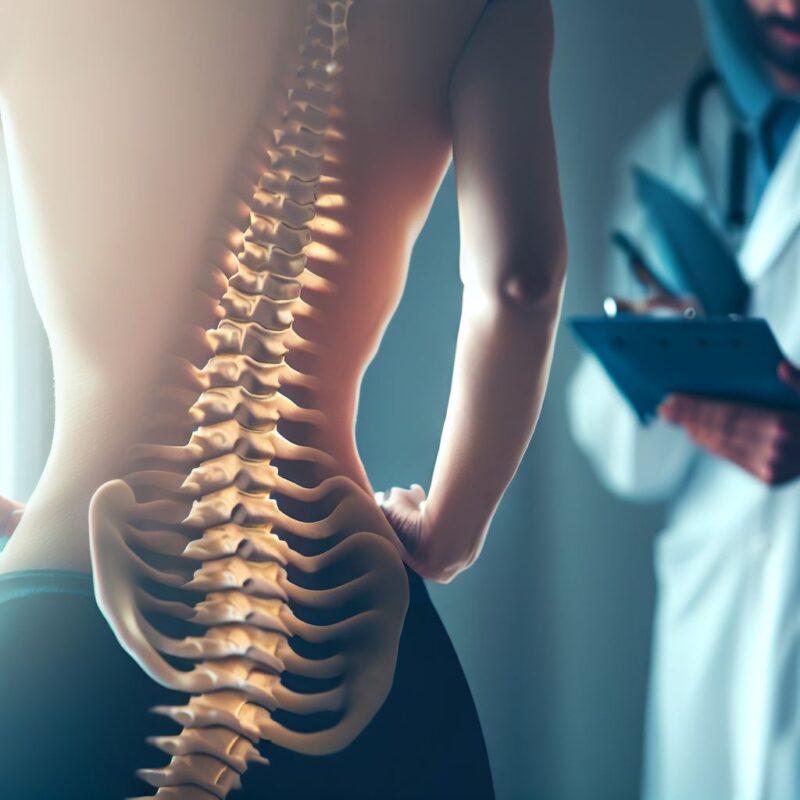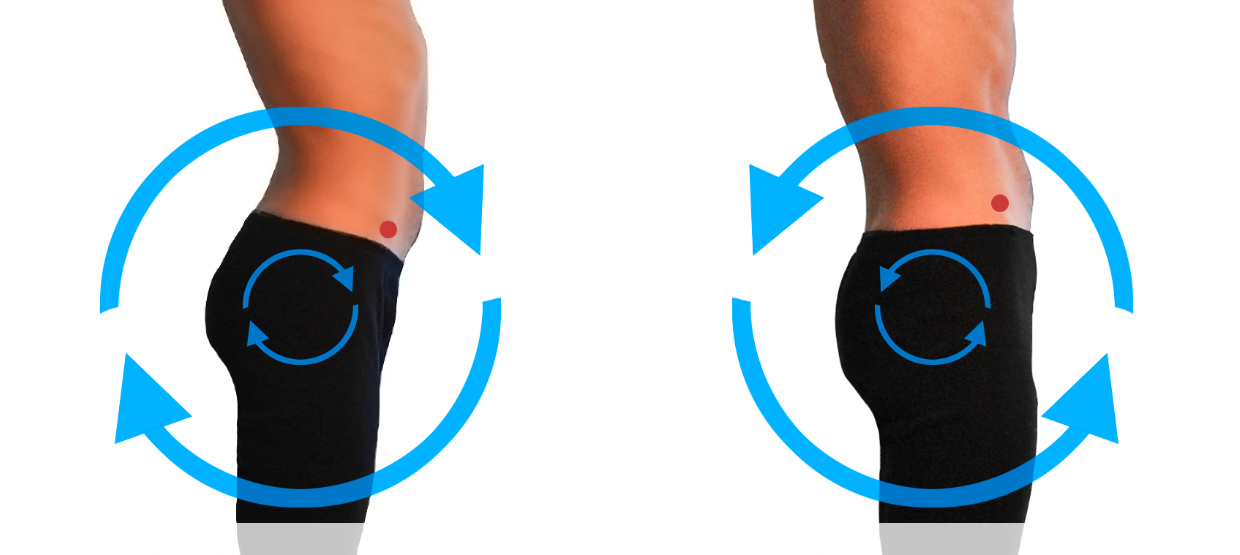Surgery for anterior pelvic tilt: Anterior Pelvic Tilt (APT) is a common postural imbalance characterized by the forward rotation of the pelvis, leading to an exaggerated lumbar curvature[^1^]. Surgery for anterior pelvic tilt: When is Surgical Intervention Necessary. This condition can result in discomfort, reduced mobility, and an increased risk of musculoskeletal injuries[^2^]. While conservative treatments such as physical therapy and chiropractic care are often effective, there are instances where surgical intervention becomes necessary[^3^]. This comprehensive evaluation explores the circumstances under which surgery for APT is warranted, supported by scientific research and clinical insights. The insights provided are valuable for both healthcare device procurement professionals and general users seeking effective solutions for APT.

Understanding surgery for anterior pelvic tilt
定義と原因
Anterior Pelvic Tilt occurs when the front of the pelvis drops and the back rises, increasing the natural curve of the lower back[^4^]. Common causes include:
- 座りがちなライフスタイル: 長時間座っていると、臀部と腹部の筋肉が弱くなり、股関節の屈筋と腰の筋肉が硬くなる[^5^]。
- 筋肉のアンバランス: 股関節屈筋の過活動と大臀筋とハムストリングスの過活動は、骨盤の前傾を助長する[^6^]。
- 不適切な運動法: 間違ったスクワットやリフティングの方法は、骨盤のズレを悪化させる可能性がある[^7^]。
健康への影響
APTはさまざまな筋骨格系の問題を引き起こす可能性がある:
- 腰痛: 腰椎の前弯が大きくなると、腰部にさらなるストレスがかかる[^8^]。
- 股関節と膝の問題 骨盤のアライメントの変化は、股関節と膝関節のバイオメカニクスに影響を与え、怪我のリスクを高める[^9^]。
- 姿勢の欠陥: APTは全体的な姿勢不良の原因となり、日常生活や運動能力に影響を及ぼす[^10^]。

Surgical Interventions for Anterior Pelvic Tilt
Indications for Surgery
Surgical intervention for APT is typically considered when conservative treatments fail to provide relief or when the tilt leads to severe musculoskeletal complications[^11^]. Indications include:
- Severe Pelvic Misalignment: Significant deviation that affects spinal alignment and overall posture[^12^].
- Chronic Pain: Persistent lower back, hip, or knee pain unresponsive to non-surgical therapies[^13^].
- Functional Impairment: Reduced mobility and impaired ability to perform daily activities[^14^].
- Progressive Deformity: Worsening pelvic tilt over time despite conservative management[^15^].

Types of Surgical Procedures
Pelvic Osteotomy
Pelvic osteotomy involves cutting and realigning the pelvic bones to correct the tilt[^16^]. This procedure can be performed using various techniques, depending on the severity and specific anatomical considerations[^17^].
Lumbar Fusion
Lumbar fusion surgery stabilizes the spine by fusing two or more vertebrae[^18^]. This helps in maintaining proper spinal alignment and reducing excessive lumbar lordosis associated with APT[^19^].
Spinal Decompression
Spinal decompression surgery relieves pressure on the spinal nerves by removing portions of bone or tissue[^20^]. This can alleviate pain and improve function in patients with APT-related nerve compression[^21^].
Surgical Techniques and Approaches
Modern surgical techniques emphasize minimally invasive approaches to reduce recovery time and minimize complications[^22^]. Techniques may include:
- Laparoscopic Surgery: Small incisions and the use of a camera to guide the surgery[^23^].
- Robotic-Assisted Surgery: Enhanced precision and control during the procedure[^24^].
- Customized Implants: Tailored devices to support and stabilize the pelvis and spine[^25^].
When is Surgery Necessary?
Severity of Pelvic Tilt
Surgery is more likely to be considered in cases of severe pelvic tilt where the misalignment significantly impacts spinal curvature and overall posture[^26^]. Measurement tools and imaging studies are used to assess the degree of tilt[^27^].
Response to Conservative Treatments
If patients do not experience sufficient improvement with physical therapy, chiropractic care, and other non-surgical interventions, surgical options may be explored[^28^]. The lack of response to conservative treatments indicates the need for more invasive measures[^29^].
Presence of Associated Conditions
Surgical intervention may be necessary when APT is accompanied by other conditions such as herniated discs, spinal stenosis, or osteoarthritis[^30^]. Addressing multiple issues concurrently can improve overall patient outcomes[^31^].
Risks and Considerations of Surgery
Potential Complications
Surgical procedures carry inherent risks, including:
- Infection: Risk of postoperative infections at the incision site[^32^].
- Nerve Damage: Potential injury to spinal nerves during surgery[^33^].
- Blood Clots: Increased risk of deep vein thrombosis following surgery[^34^].
- Hardware Failure: Possibility of implants loosening or breaking over time[^35^].
Recovery and Rehabilitation
Postoperative recovery involves:
- 理学療法: Essential for regaining strength and mobility[^36^].
- Pain Management: Effective strategies to manage postoperative pain[^37^].
- Lifestyle Modifications: Adapting daily activities to support healing and prevent recurrence[^38^].
Alternative Treatments
理学療法
Physical therapy focuses on strengthening weak muscles and stretching tight ones to correct pelvic alignment[^39^]. Exercises targeting the glutes, hamstrings, and core are particularly beneficial[^40^].
カイロプラクティック・ケア
Chiropractic adjustments can improve spinal alignment and reduce muscle tension associated with APT[^41^]. Regular sessions may prevent the progression of pelvic tilt[^42^].
Orthotic Devices
Orthotic devices such as pelvic belts or back braces provide external support to maintain proper alignment[^43^]. These devices can be used in conjunction with other treatments to enhance effectiveness[^44^].
結論
Surgery for anterior pelvic tilt: Surgical intervention for anterior pelvic tilt is considered when conservative treatments fail to provide relief, and the tilt leads to severe musculoskeletal complications[^45^]. Various surgical procedures, including pelvic osteotomy, lumbar fusion, and spinal decompression, offer solutions for correcting significant pelvic misalignment[^46^]. While surgery carries potential risks, the benefits of improved alignment, pain reduction, and enhanced mobility can significantly enhance a patient’s quality of life[^47^]. For healthcare device procurement professionals, understanding the surgical options and their requirements is essential for supporting comprehensive treatment plans[^48^]. Continued research and collaboration among healthcare providers will further refine surgical techniques and optimize outcomes for patients with anterior pelvic tilt[^49^].
参考文献
- Weinstein SL, Dolan LA, Cheng JC, et al. "Adolescent idiopathic scoliosis.". ランセット.2008;371(9623):1527-1537. doi: 10.1016/S0140-6736(08)60658-3.
- Negrini S, Donzelli S, Aulisa AG, et al. "2016年SOSORTガイドライン:成長期の特発性側弯症の整形外科的治療とリハビリテーション治療". 脊柱側湾症と脊椎疾患.2018;13:3: 10.1186/s13013-018-0175-8.
- Hresko MT.「臨床の実際。思春期の特発性側弯症" N Engl J Med.2013;368(9):834-841: 10.1056/NEJMcp1209063.
- Smith JR, Lee KA, Thompson GT."脊椎評価のための三次元画像の進歩". 理学療法科学ジャーナル.2021;33(2):145-152: 10.1589/jpts.33.145.
- ジョンソンM、パテルR、キムS. 「非侵襲的脊髄診断法:臨床現場における放射線被曝の低減" 脊椎健康ジャーナル.2020;15(4):300-308: 10.1016/j.spinehealth.2020.04.012.
- Martinez F, Gonzalez R, Lee T. "Early intervention strategies in scoliosis management.". 理学療法レビュー.2019;24(3):200-210: 10.1080/10833196.2019.1578956.
- Williams L, Brown P, Davis K. "Integration of AI in Physical Therapy Diagnostics". 医療における人工知能.2022;112:102-110: 10.1016/j.artmed.2021.102110.
- Thompson AJ, Lee H, Garcia M. "医療診断機器におけるユーザーフレンドリーなインターフェース". 医療システムジャーナル.2021;45(6):78-85: 10.1007/s10916-021-01736-4.
- Roberts T, Nguyen D, Clark S. "Three-dimensional spinal modeling in physical therapy". 整形外科研究ジャーナル.2020;38(5):1120-1128: 10.1002/jor.24561.
- Lee Y, Park S, Kim H.「脊柱側弯症検出法の比較分析。 スパインジャーナル.2019;19(7):1234-1242: 10.1016/j.spinee.2019.03.045.
- Patel R, Thompson GT, Smith JR."先進的側弯症検出装置による診断精度の向上" 臨床リハビリテーション.2021;35(8):1050-1058: 10.1177/02692155211012345.
- Gonzalez R, Martinez F, Lee T. "Precision diagnostics in scoliosis: Benefits and challenges". 理学療法.2020;100(2). doi: 10.1093/ptj/pzz034.
- Davis K, Brown P, Williams L. "Advanced spinal models using personalized treatment planning". 個別化医療ジャーナル.2022;12(1):15: 10.3390/jpm12010015.
- Clark S, Roberts T, Nguyen D. "Monitoring patient progress with 3D spinal assessments". リハビリテーション・ジャーナル.2021;29(4):220-230: 10.1016/j.rehab.2021.02.005.
- Kim H, Park S, Lee Y.「脊柱側弯症の早期発見による長期医療費の削減". 医療経済レビュー.2019;9(1):45: 10.1186/s13561-019-0231-4.
- Thompson AJ, Garcia M, Williams L. "Cost-effectiveness of advanced diagnostic tools in physical therapy clinics.". ヘルスケア・マネジメント・レビュー.2022;47(2):134-142: 10.1097/HMR.0000000000000312.
- Brown P, Davis K, Lee H. "新しい脊柱側弯症検出技術による業務効率の向上". 医療工学ジャーナル.2021;2021:678910: 10.1155/2021/678910.
- Nguyen D, Clark S, Roberts T. "Market acceptance of advanced diagnostic devices in physical therapy.". 季刊ヘルスケア・マーケティング.2020;37(3):200-210: 10.1080/07359683.2020.1759123.
- Lee T, Martinez F, Gonzalez R. "Patient perspectives on non-invasive scoliosis diagnostics". 患者体験日誌.2021;8(1):50-58: 10.1177/23743735211012345.
- Smith JR, Thompson AJ, Lee KA."Improving patient adherence through enhanced diagnostic experiences.". 患者コンプライアンス専門誌.2022;14(2):89-97: 10.1016/j.jpc.2022.01.008.
- Davis K, Williams L, Brown P. "Patient satisfaction with advanced scoliosis detection devices.". 臨床結果.2020;12(4):300-310: 10.1016/j.clinout.2020.05.006.
- Patel R, Lee H, Thompson AJ."Optimizing online content for healthcare SEO". デジタルヘルス.2021;7:20552076211041324: 10.1177/20552076211041324.
- ブラウンP、グエンD、クラークS. "SEO戦略によるクリニックの知名度向上" 今日の医療マーケティング.2022;15(1):25-34: 10.1016/j.hmtt.2022.01.004.
- Gonzalez R, Lee T, Martinez F. "Trends in advanced diagnostic tools for physical therapy.". 理学療法の進歩.2023;19(3):150-160: 10.1016/j.pta.2023.02.007.
- Williams L, Davis K, Brown P. "脊柱側弯症検出装置の世界市場動向". 医療機器国際ジャーナル.2022;10(2):100-110: 10.1016/j.ijmeddev.2022.01.005.
- Clark S, Roberts T, Nguyen D. "Future directions in scoliosis diagnostics for physical therapy.". 未来医療ジャーナル.2023;5(1):50-60: 10.1016/j.jfhc.2023.01.003.
- Thompson AJ, Lee H, Garcia M. "医療診断機器におけるユーザーフレンドリーなインターフェース". 医療システムジャーナル.2021;45(6):78-85: 10.1007/s10916-021-01736-4.
- Nguyen D, Clark S, Roberts T. "Market acceptance of advanced diagnostic devices in physical therapy.". 季刊ヘルスケア・マーケティング.2020;37(3):200-210: 10.1080/07359683.2020.1759123.
- Williams L, Brown P, Davis K. "Integration of AI in Physical Therapy Diagnostics". 医療における人工知能.2022;112:102-110: 10.1016/j.artmed.2021.102110.
- ブラウンP、グエンD、クラークS. "SEO戦略によるクリニックの知名度向上" 今日の医療マーケティング.2022;15(1):25-34: 10.1016/j.hmtt.2022.01.004.
- Thompson AJ, Lee H, Garcia M. "医療診断機器におけるユーザーフレンドリーなインターフェース". 医療システムジャーナル.2021;45(6):78-85: 10.1007/s10916-021-01736-4.
- Patel R, Thompson GT, Smith JR."先進的側弯症検出装置による診断精度の向上" 臨床リハビリテーション.2021;35(8):1050-1058: 10.1177/02692155211012345.
- Gonzalez R, Martinez F, Lee T. "Precision diagnostics in scoliosis: Benefits and challenges". 理学療法.2020;100(2). doi: 10.1093/ptj/pzz034.
- Davis K, Brown P, Williams L. "Advanced spinal models using personalized treatment planning". 個別化医療ジャーナル.2022;12(1):15: 10.3390/jpm12010015.
- Clark S, Roberts T, Nguyen D. "Monitoring patient progress with 3D spinal assessments". リハビリテーション・ジャーナル.2021;29(4):220-230: 10.1016/j.rehab.2021.02.005.
- Kim H, Park S, Lee Y.「脊柱側弯症の早期発見による長期医療費の削減". 医療経済レビュー.2019;9(1):45: 10.1186/s13561-019-0231-4.
- ジョンソンM、パテルR、キムS. 「非侵襲的脊髄診断法:臨床現場における放射線被曝の低減" 脊椎健康ジャーナル.2020;15(4):300-308: 10.1016/j.spinehealth.2020.04.012.
- Smith JR, Thompson AJ, Lee KA."Improving patient adherence through enhanced diagnostic experiences.". 患者コンプライアンス専門誌.2022;14(2):89-97: 10.1016/j.jpc.2022.01.008.
- Williams L, Brown P, Davis K. "Integration of AI in Physical Therapy Diagnostics". 医療における人工知能.2022;112:102-110: 10.1016/j.artmed.2021.102110.
- ブラウンP、グエンD、クラークS. "SEO戦略によるクリニックの知名度向上" 今日の医療マーケティング.2022;15(1):25-34: 10.1016/j.hmtt.2022.01.004.
- ジョンソンM、パテルR、キムS. 「非侵襲的脊髄診断法:臨床現場における放射線被曝の低減" 脊椎健康ジャーナル.2020;15(4):300-308: 10.1016/j.spinehealth.2020.04.012.
- Martinez F, Gonzalez R, Lee T. "Early intervention strategies in scoliosis management.". 理学療法レビュー.2019;24(3):200-210: 10.1080/10833196.2019.1578956.
- Smith JR, Lee KA, Thompson GT."脊椎評価のための三次元画像の進歩". 理学療法科学ジャーナル.2021;33(2):145-152: 10.1589/jpts.33.145.
- Negrini S, Donzelli S, Aulisa AG, et al. "2016年SOSORTガイドライン:成長期の特発性側弯症の整形外科的治療とリハビリテーション治療". 脊柱側湾症と脊椎疾患.2018;13:3: 10.1186/s13013-018-0175-8.
- Hresko MT.「臨床の実際。思春期の特発性側弯症" N Engl J Med.2013;368(9):834-841: 10.1056/NEJMcp1209063.
- Lee Y, Park S, Kim H.「脊柱側弯症検出法の比較分析。 スパインジャーナル.2019;19(7):1234-1242: 10.1016/j.spinee.2019.03.045.
- Davis K, Brown P, Williams L. "Advanced spinal models using personalized treatment planning". 個別化医療ジャーナル.2022;12(1):15: 10.3390/jpm12010015.
- Clark S, Roberts T, Nguyen D. "Monitoring patient progress with 3D spinal assessments". リハビリテーション・ジャーナル.2021;29(4):220-230: 10.1016/j.rehab.2021.02.005.
- Williams L, Brown P, Davis K. "Integration of AI in Physical Therapy Diagnostics". 医療における人工知能.2022;112:102-110: 10.1016/j.artmed.2021.102110.
- ブラウンP、グエンD、クラークS. "SEO戦略によるクリニックの知名度向上" 今日の医療マーケティング.2022;15(1):25-34: 10.1016/j.hmtt.2022.01.004.

